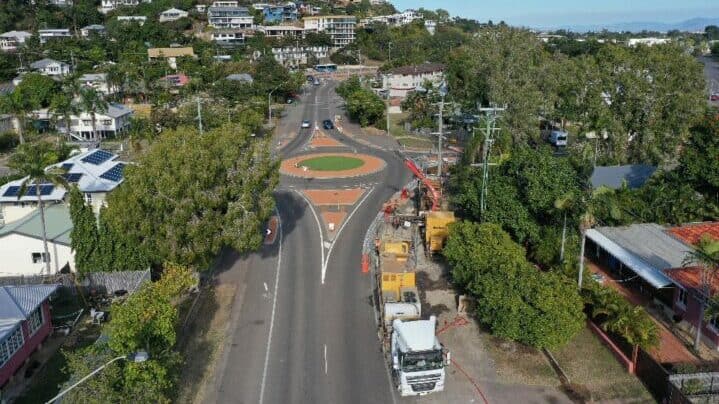Installing pipelines in urban areas presents a number of challenges, including above ground infrastructure which can limit the space available for equipment and materials. While executing these installations is the same as for open areas, selecting the right construction method and a contractor with equipment that has a modular set up – such as the AXIS laser guided microtunnelling system – will ensure site footprint is kept to a minimum, disturbance to the surrounding infrastructure and community is reduced, and there is less chance of problems arising.
Selecting the method
Traditional open cut methods of pipeline installation are inappropriate for urban areas where there is often limited space or a small site footprint is required as the length of the pipeline – which may include roads and footpaths – needs to be blocked off for a period of time to allow excavation, installation and restoration works to take place. Open cut installations can be very disruptive to the community, and cannot be used in projects where the pipeline needs to cross roads or rail tracks.
While horizontal directional drilling (HDD) can be used as a trenchless alternative to open cut methods, it can be also problematic, especially residential areas or where a small site footprint is required. This is because it uses a surface launched technique, with the machine needing to sit back from the starting point and enough room at the exit point as it requires the pipe being used to be laid out in a continuous length – a problem if these areas encroach on public property.
Microtunnelling does not have these limitations. As it is a pit-launched technique, it only requires an entry and exit shaft to be excavated, minimising road closures and community disruption. This also mitigates the issue of the set up or exit areas falling on private property. The AXIS laser guided microtunnelling system has additional benefits over other machines as it uses the vacuum excavation which helps to maintain a clean and compact site. Rather than piles of spoil and the multiple trucks and loaders often required with other methods for its management, the spoil is contained in a vacuum tank that can transport it to a different site for disposal, reducing the amount of mess or equipment at the site.
A modular set up
A major benefit of the AXIS laser guider microtunnelling system is that unlike other machines on the market it has a flexible, modular design, allowing the number of trucks and trailer setup to be configured in a number of ways for jobsite footprint conditions and to accommodate customer preference.
For example, in a job completed in Maribyrnong in Melbourne’s inner west Edge Underground needed to install a sewer pipeline for a high-rise development in a very tight access area in the middle of a road and close to tram tracks. We were required to work between two lanes in a very slow road reserve, and we weren’t able to load excavated material into trucks to take away and bring back for reinstatement. The modular design of the AXIS laser guided microtunnelling system allowed us to take on this job when no other contractor was able to as we were able to tailor the setup to suit site conditions and keep our footprint to a minimum.

